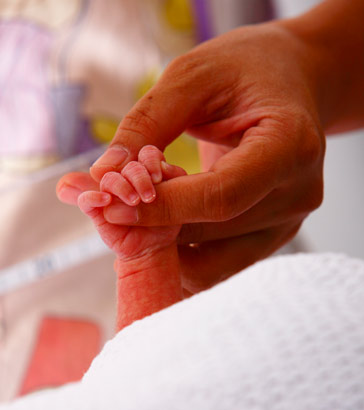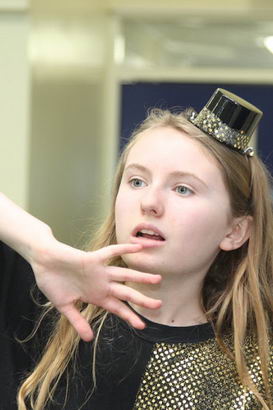Movement is central to the child's ability to explore their environment – first by sight and then physically.
All children follow the same sequence of movement development, progressing from pre-natal reflexes to independent, goal-directed movement. However, this sequence occurs at different rates for different children depending on their genes and environment.
To see the sequence of motor development and the 'red flags' for different ages, look at the following resources:

As the central nervous system matures, the reflexes are inhibited to allow the infant to make purposeful
movements.
For example...[t]he Moro reflex interferes with head control and sitting equilibrium. As this reflex lessens and disappears
by 6 months of age the infant gains increasing stability in a sitting position.
Gerber et al, 2010

Gallahue and Ozman suggest three stages in the learning of motor skills:
- Early experimenting: the emerging movement pattern.
- Elementary: refining movement; may lack strength, mobility, balance, speed and/or co-ordination.
- Mature: actions within a pattern of movement are integrated; movement is prepared for, carried out and recovered from effectively.
(1995, in Evangelou, 2009)
In the developing child, the same principles of motor development apply as with the fetus in the womb:
1. Structures nearest the head are more developed than those further away.
In progessing to walk, the child gains physical control in the following sequence:
- Head;
- Shoulders (allowing the infant to raise their head);
- Trunk and hips (allowing the infant to sit);
- Knees, ankles and feet (allowing the infant to crawl, then stand, and finally walk).
2. Structures nearest the body are further developed than those that are more distant.
In developing fine motor capability, a child firstly gains control of:
- Their shoulders;
- Their hands; and then finally
- Their fingers.
Fine motor skills allow us to use our arms, hands and fingers to engage and manipulate the
environment. This allows us to perform self-help tasks, to play and to accomplish work (Gerber
et al, 2010).
As a child grows older, neurological development allows greater discrimination and refinement of
movement. An infant will use their whole arm to pick up objects. A more developed child will
begin to recognise the importance of distances and will use individual joints in their arm (eg
elbow, wrist) so they can reach objects at different distances (Evangelou et al, 2009).
It is generally accepted that the part of the brain that controls hand and finger co-ordination:
- Isn't fully developed until a child at least five years old;
- Is slower to develop in boys than girls.
Therefore, too early an emphasis on handwriting may be unhelpful. Allowing young children the
freedom to be active and to learn through exploring their environment will help them to improve
their motor skills.
Motor skills are not only essential for children's learning, but lack of capability in this area can
have a negative effect on children's social and emotional well-being.
Children with low movement skills and competence tend to be less active. They play less on
playground equipment, play less sport and spend less time interacting with their peers.
Broad-based and varied play, dance, games, and gymnastics can enable children to achieve:
- Fundamental movement patterns;
- Creative functional movement;
- Physical development and growth.
(Evangelou et al, 2009)

To find out about the goals of physical education, read the Movement goals document.
Think of a boy and a girl you know each that are aged between four and six years of age. Write down the kind of gross and fine motor skills they have acquired.
Read all of the developmental milestones for physical and motor development:
Developmental Milestones (Kirby, 2012).
Compare what you find with the notes you have made about the motor development of the two
children that you know aged between four and six years of age.

Evangelou, M., Sylva, K. and Kyriacou, M., Wild, M. and Glenny, G. (2009) Early Years Learning and Development: Literature Review. Annesley: DCSF Publications (accessed 12.1.12).
Gerber, R.J., Wilks, T. and Erdie-Lalena, C. (2010) Developmental milestones: motor development, Paediatric Review, 31, 267-277.
If you wish to read around the subject the following book by Lindon is illuminating:
Lindon, J. (2005) Understanding Child Development: Linking theory and practice. London: Hodder Headline.